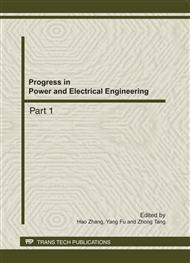p.696
p.703
p.707
p.711
p.717
p.722
p.726
p.732
p.739
Evaluation of Thermal Comfort in an Air Conditioning Room Using a CFD Model
Abstract:
In order to obtain the thermal comfort work environment, the distribution of temperature and airflow velocity in typical computer room of school building is discussed with different supply air angles and velocities of incidence by CFD model. The calculated temperature after cooling in the room has a good agreement with the measured value. Furthermore, the distribution of temperature and airflow is uniform and the environment is comfort for working with supply air angles and velocity of incidence 45° and 60° and supply air velocity of incidence 1m/s comparing with that of other parameters. Additionally, the change of temperature becomes slow down with the increment of time and the air-conditioning has less influence on the change of temperature after about 900s with supply air angle and velocity of incidence 45°and 1m/s, respectively. The research is of great significance both in theory and practice to design air conditioning systems and evaluate the thermal comfort conditions.
Info:
Periodical:
Pages:
717-721
Citation:
Online since:
October 2011
Authors:
Price:
Сopyright:
© 2012 Trans Tech Publications Ltd. All Rights Reserved
Share:
Citation:


